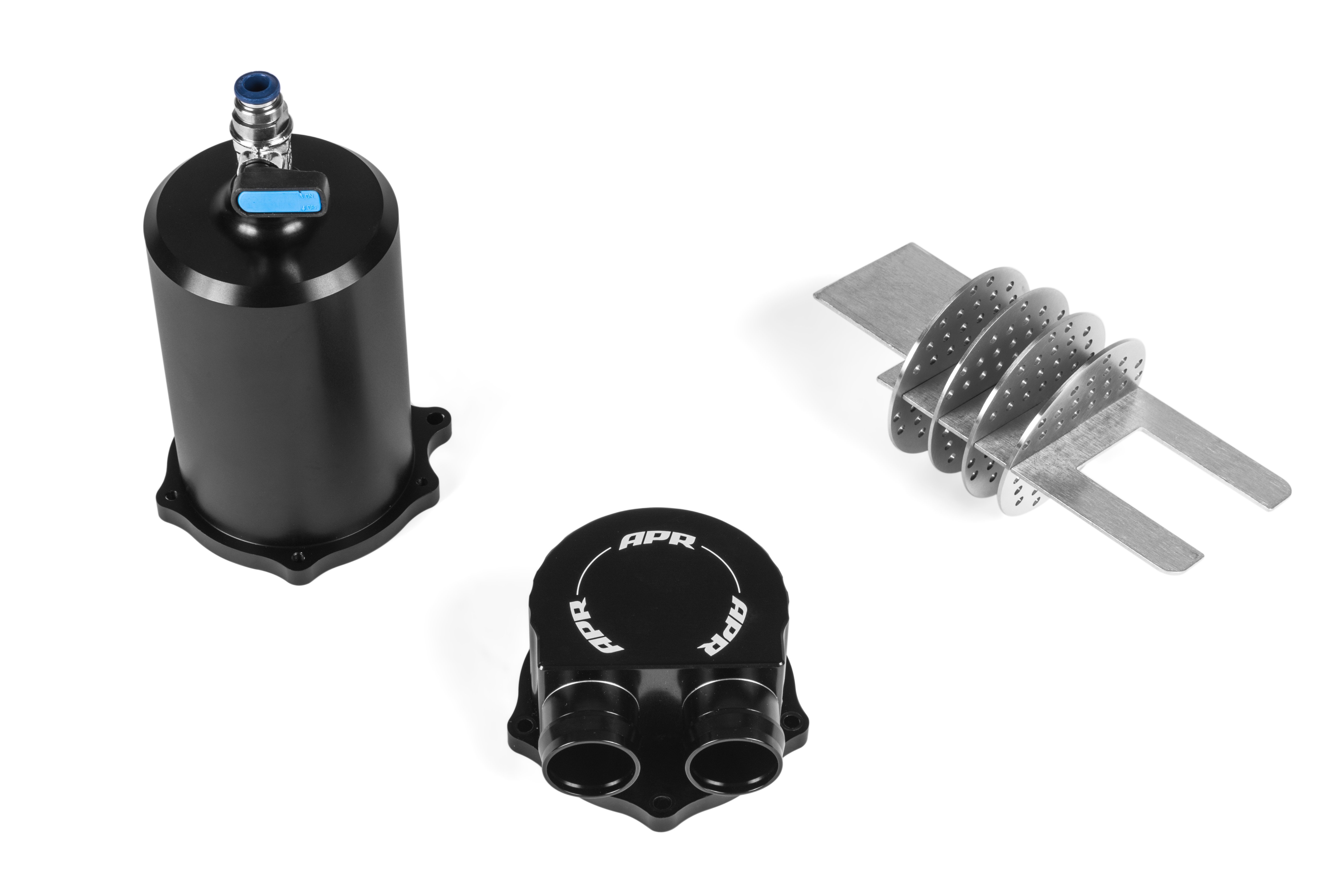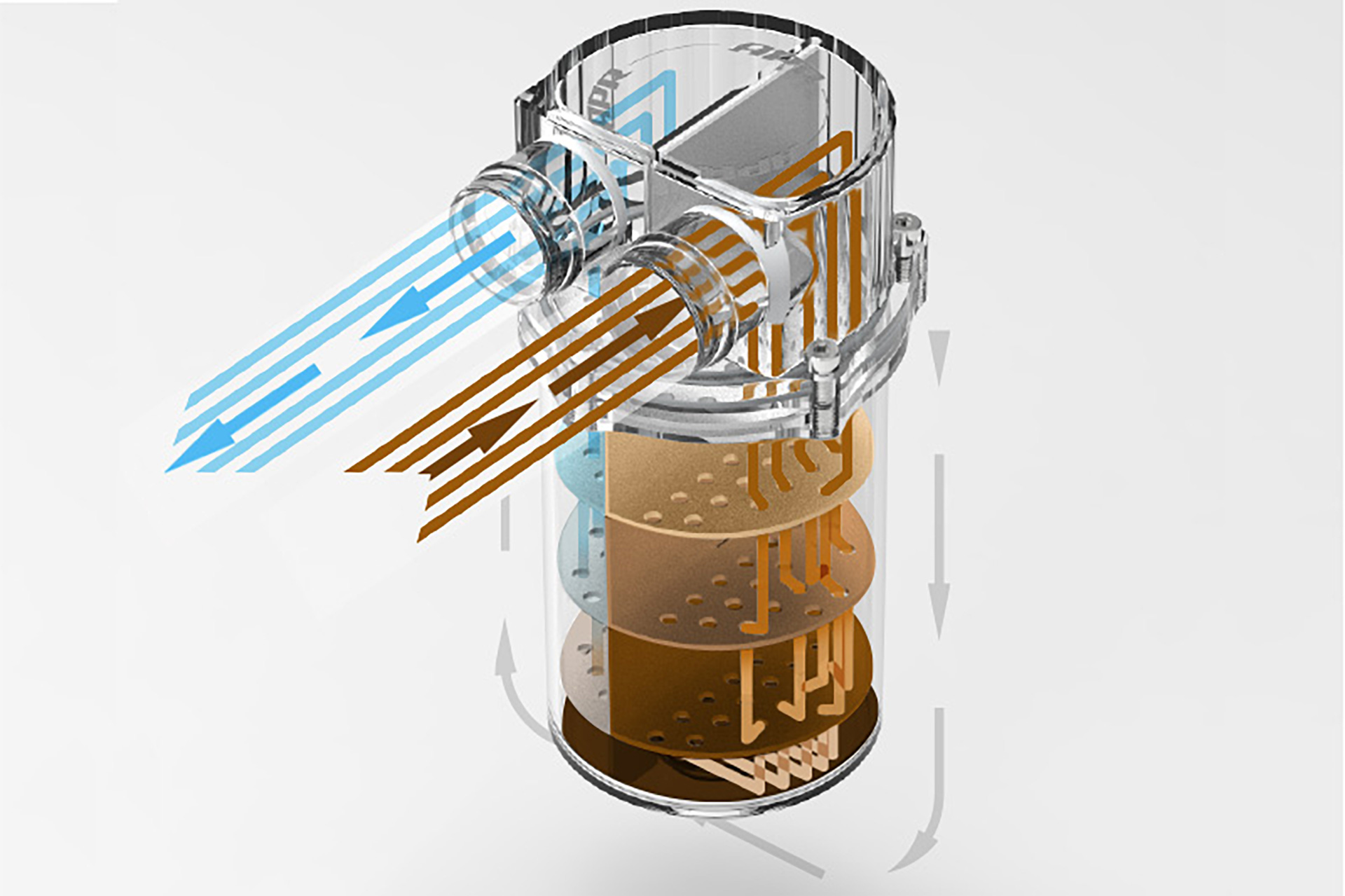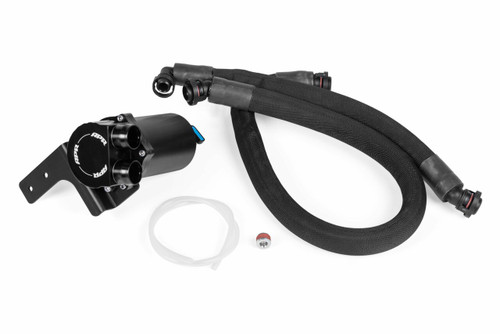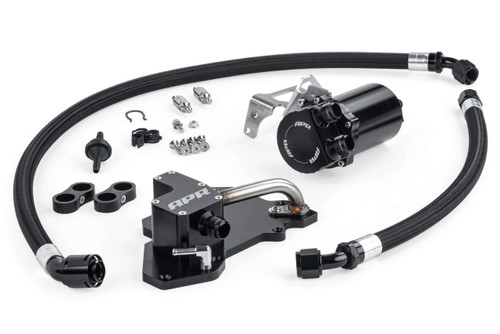The Ultimate Catch Can System is here!
The APR Oil Catch Can System traps excessive crankcase oil vapors and gunk from entering the engine. The system eliminates a possible performance robbing boost leak, while reducing carbon buildup on intake valves, octane lowering oil vapors and oil pooling within the intake tract. It’s a simple modification to install, drains in seconds with the flick of a knob, and is recommended at all stages of performance.
Overview
Fits 2011-2018 Volkswagen Jetta
Features:
- Increases performance
- Increases performance by eliminating a common boost leak, and reducing octane lowering oil vapors and airflow restricting carbon buildup.
- Eliminates a boost leak
- Bypassing the PCV manifold connection point eliminates a possible failure point.
- Catches oil and gunk
- Oil and gunk pools in the can, not in the intercooler piping.
- Easy to drain
- A simple knob allows the system to drain in seconds without any tools.
- Easy to install
- Installs in minutes.
- The hoses pop right on without tools thanks to the OEM Norma fittings.
- Easy to maintain
- Yearly maintenance is a snap thanks to the two-piece billet design.
- High-quality hoses
- Resist oil degradation, kinks, abrasion, and blockage from freezing, with an OEM look.
- High-quality can, plate and bracket
- Strong, clean and attractive billet-aluminum and stainless steel parts look right at home in the engine bay.


Quick Facts
- Increases performance: Increases performance by eliminating a common boost leak, and reducing octane lowering oil vapors and airflow restricting carbon buildup.
- Eliminates a boost leak: Bypassing the PCV manifold connection point eliminates a possible failure point.
- Catches oil and gunk: Oil and gunk pools in the can, not in the intercooler piping.
- Easy to install: Installs in minutes. The hoses pop right on without tools thanks to the OEM Norma fittings.
- Easy to maintain: Yearly maintenance is a snap thanks to the two-piece billet design.
- High-quality hoses: Resist oil degradation, kinks, abrasion, and blockage from freezing, with an OEM look.
- High-quality can, and bracket: Strong, clean and attractive billet-aluminum and stainless steel parts look right at home in the engine bay.



The Problems
An engine produces extreme pressures within its cylinders during operation and some ultimately slips by the piston rings and pressurizes the engine’s crankcase. This is exacerbated when increasing horsepower and driving harder. To relieve the pressure, the engine uses a failure prone PCV system that dumps the pressure, along with oil vapors, back into the intake tract to be consumed by the engine. Unfortunately, this results in the following performance robbing scenarios:
- Oil vapors mix with the air/fuel mixture, which reduces octane and hurts performance.
- Carbon builds up on the back of intake valves, which reduces airflow and hurts performance.
- Messy oil pools in the intake tract and coats the intercooler, leading to hose degradation, and reduced IC effectiveness.
- The factory PCV system can fail, creating a massive boost leak that directly pressurizes the crankcase.


The Solution
The APR Oil Catch Can System eliminates boost pressure from seeing the front PCV port. The system routes crankcase gasses through the APR catch can, which filters oil vapors through a track-proven four-staged baffling system. The vapors pool in the bottom of the can, while the rest of the pressure is diverted back to the intake tract where it’s burned off by the engine.
The result is simple:
- A cleaner engine
- Better performance
- Elimination of a possible failure point

System Overview













